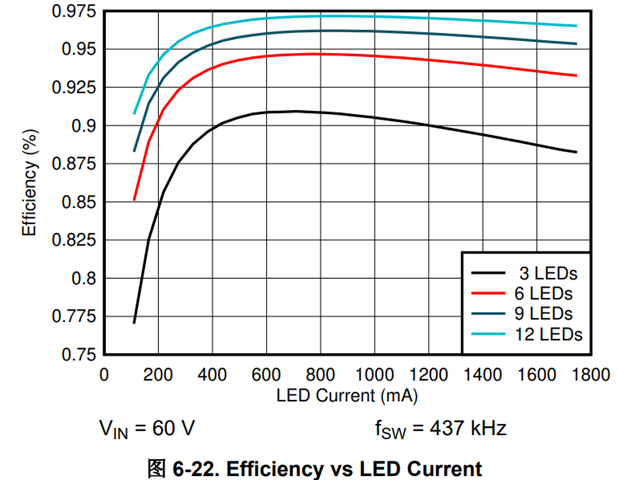hello,
i have one question about the TPS92520 efficiency ,i would like to know Why is the efficiency relatively low under light load conditions?
As the load increases, efficiency improves, but in the end, efficiency decreases again when the load increases. Why is this?


